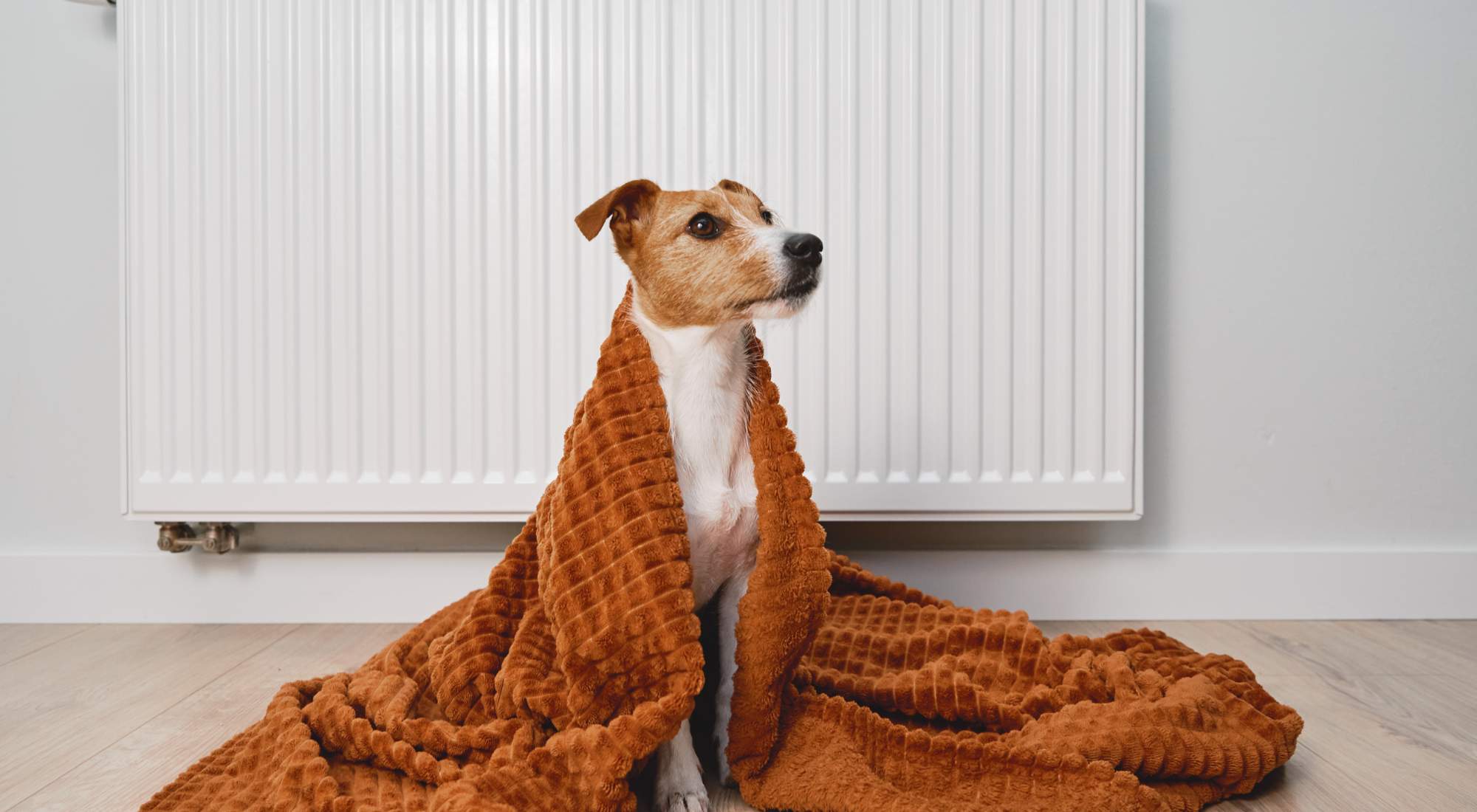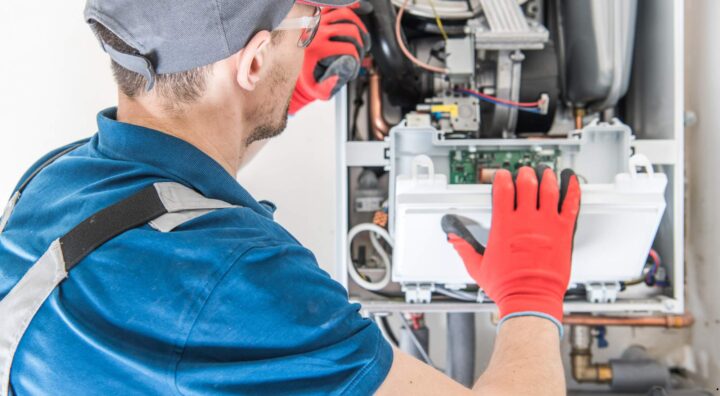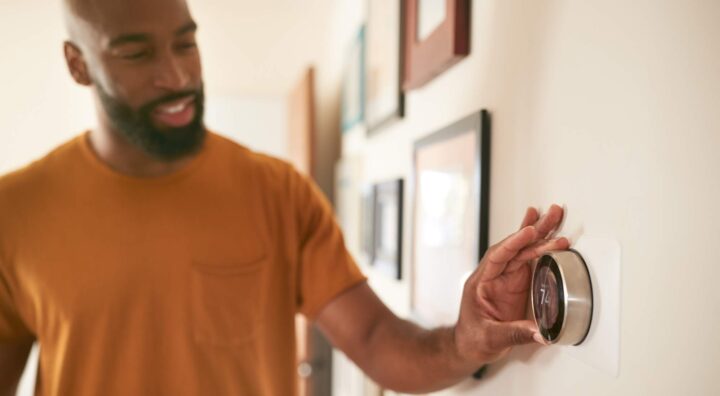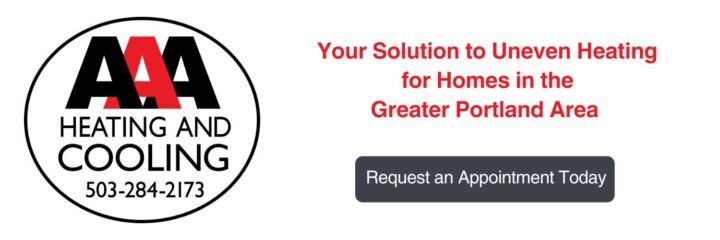
You crawl out of your toasty, warm bed to shuffle downstairs for coffee, only to discover that the second you leave your room, it feels like you’ve walked straight into a freezer. As you turn around to grab a sweatshirt, the thought hits you — Why does it feel so much colder the moment I leave my room? Shouldn’t the entire house be the same temperature?
Several factors can cause certain areas of your home to feel cooler than others. The good news is, there are common issues you can check for and practical solutions that can help distribute heat more evenly.
In this article, we’ll cover common causes of uneven heating in homes and share solutions and tips to keep the temperature balanced throughout your space.
Table of Contents
- Why Is My House Not Heating Evenly?
- Frequent Causes for Uneven Heating in Your Home
- 5 Most Common Problems and Solutions for Uneven Heating
- Tips To Prevent Uneven Heating in Homes
- From Drafty Rooms to Cozy Comfort – Trust AAA Heating and Cooling
Why Is My House Not Heating Evenly?
Uneven heating in your home can stem from several different issues, including but not limited to drafty doors or windows, poor insulation, ductwork leaks, clogged or dirty air filters, and blocked vents.
Frequent Causes for Uneven Heating in Your Home
Determining the cause of your uneven heating may require checking your ductwork, insulation, and vents.
Determine the cause of your uneven heating by:
- Checking your ductwork – When certain rooms tend to be warmer or cooler than others, this may indicate that your ductwork is leaking. Perform a visual inspection or use a smoke test to locate any holes or points where air is escaping. Other issues that can result from faulty ductwork include:
-
-
- Increased energy bills due to the escape of warm air
- The accumulation of dust that is being circulated throughout your home
- Unusual noises coming from the system
- Inspecting your insulation – To keep your home properly insulated, measure the thickness of your insulation and visually inspect it for even coverage, water damage, or signs of pests. If any of these issues are present, repair the damage so your insulation can work as it should.
-
- Determining if your vents are blocked – Locate each vent and inspect for weak or absent airflow, dust or debris buildup, or a musty smell to identify if there is a blockage within. If you can’t locate your vents, they may be hidden or blocked by furniture, which can also restrict the airflow into that room.
- Looking to see if your furnace has a dirty HVAC filter – Your furnace air filter needs to be replaced every 30 to 90 days, depending on the season. You should check the status of your filter every month to be sure that it is not visibly dirty or clogged. Other factors that determine how frequently the filter needs to be replaced are:
-
- The presence of pets in the home
- The thickness of your filter
- The amount of system usage
- Its MERV rating
If your efforts come up empty-handed or you do not have the experience to understand what you’re searching for, it may be time to call your local Portland home furnace service professional to inspect your HVAC system. With years of experience, AAA Heating and Cooling has the expertise to pinpoint what’s behind your home’s uneven heating.
Call us today to set up an appointment to solve the problem so you can enjoy comfort in every room.
5 Most Common Problems and Solutions for Uneven Heating
While there are many reasons for uneven heating in homes, a handful of common problems have effective solutions.
#1: Is It Coldest Near Windows or Doors?
If you notice a sudden chill when walking by a door or window, the problem may be that air is leaking in through gaps or cracks. Your windows or doors may have been installed incorrectly, leaving space between the window and the wall frame for air to flow through.
Solutions to limit draft coming from your doors include:
- Applying weatherstripping to the bottom and sides
- Using a draft guard or a thick blanket to block the air from entering
- Sealing any holes, cracks, or gaps around your door with caulk or weatherstrips
Solutions to limit draft coming from your windows include:
- Replacing damaged or worn weatherstripping
- Filling gaps in between the window frame and wall frame with caulk
- Making sure your windows are locked
- Reglazing window panes
- Using heavy drapes
#2: Is Your Main Floor Colder Than Upstairs?
Your upstairs may feel warmer than the first floor because warm air naturally rises while cool air sinks. While this may not matter much in a properly heated home, it can become more noticeable in a house that struggles to maintain balanced heating.
Reasons why your downstairs is noticeably colder than upstairs include:
- Poor insulation
- Improperly balanced HVAC system
- Duct problems

#3: Are Certain Rooms Colder Than Others?
Temperature fluctuations as you walk through your home can make living spaces uncomfortable. If a room feels noticeably cooler than the rest of your house, you’ll need to identify the underlying cause and address it.
Issues that create rooms to vary in temperature include the following:
- Leaks in your ductwork could be the reason certain rooms aren’t heating as well as others.
- Vents that are closed or obstructed by furniture will restrict the airflow into your rooms.
- Having an incorrectly sized heating system can keep your home from warming properly. If your furnace is too small, it may not have the strength to heat your entire home. If your furnace is too large, it may cycle on and off too frequently, causing temperature fluctuations throughout your home.
- Poor insulation in rooms that are located near the attic or an outside wall can cause a loss of warm air. Without proper insulation, warm air will escape the room while cold air is able to seep in.
- A clogged filter can prevent airflow throughout your home.
#4: Do You Have Cold Spots on Your Radiator?
If you’ve noticed your radiator doesn’t have an even temperature across its surface, there may be a problem. Radiators are supposed to evenly warm throughout the system as there is constant hot water flowing in and then back out.
The most common reason your radiator is cold on the top is due to trapped air. Since air is lighter than water, bubbles inside a radiator naturally float upward and collect at the top. The trapped air will prevent the top from heating up because of the disruption in the hot water flowing through the pipes. Thankfully, radiators have a built-in solution to this problem. A bleed valve is placed at the top of the radiator to release accumulated air and allow water to fill back to the highest point.
If your radiator is cold on the bottom, this typically means you have a blockage within that is restricting the flow of water. To fix this, your radiator needs to be cleaned manually, treated with chemicals, and flushed so water can flow freely through the pipes.
Check your thermostatic radiator valves (TRVs) to ensure they are not stuck. TRVs are self-regulating valves that adjust the flow of hot water in a radiator to maintain your desired room temperature. After the warmer months, TRVs can sometimes seize up, preventing your radiator from heating properly. A stuck valve can cause uneven heating across your home, so make sure each valve can move freely.
#5: Is Your Thermostat in a Drafty Spot?
If your thermostat is located in a drafty place or an area with frequent temperature fluctuations, it may be sending inaccurate signals to your heating system. Because of the inaccurate readings it’s receiving, your thermostat may signal your HVAC system to heat at the wrong times, causing uneven heating.
If your thermostat’s location is causing problems, the next step is to call a professional. AAA Heating and Cooling can move your thermostat to a more central location, helping it provide more accurate temperature readings.

Tips To Prevent Uneven Heating in Homes
A few tips to help you even out the heating in your home are as follows:
- Add more insulation in your attic to prevent the loss of heat.
- Switch the thermostat from auto to on so your fan continuously circulates air throughout your home. When your thermostat is set to auto, the fan only runs when the system is called to heat.
- Control different areas by installing a zoning system. This added expense provides the benefit of controlling temperatures in individual areas or floors, helping maintain even heating across your home.
- Use your air vents to reallocate air. Closing off vents in rooms that are warm enough will direct the air to the rooms that need more heat.
If your thermostat is in an inconvenient location, you want to install a zoning system, need more insulation, or need to find the source of your uneven heating, AAA Heating and Cooling does it all.
From Drafty Rooms to Cozy Comfort — Trust AAA Heating and Cooling
You should have a home that you can walk about and enjoy constant comfort as you move from room to room. If one room feels like a sauna while the next feels like a tundra, it may be time to hire a professional to assess your home’s heating system.
AAA Heating and Cooling has been a trusted, certified name since 1961, backed by decades of experience and an excellent track record. Our specialists are ready to listen to your concerns and design a customized plan to address uneven heating throughout your home.
We offer repair and maintenance on the following:
- Furnaces
- Air Conditioners
- Heat Pumps
- Air Quality Systems
- Control Systems
- Water Heaters
- Duct Cleaning
- Renewable Energy
Reach out to your Portland or Beaverton HVAC company, AAA Heating and Cooling, to discuss the next steps to balance the heating in your home.
